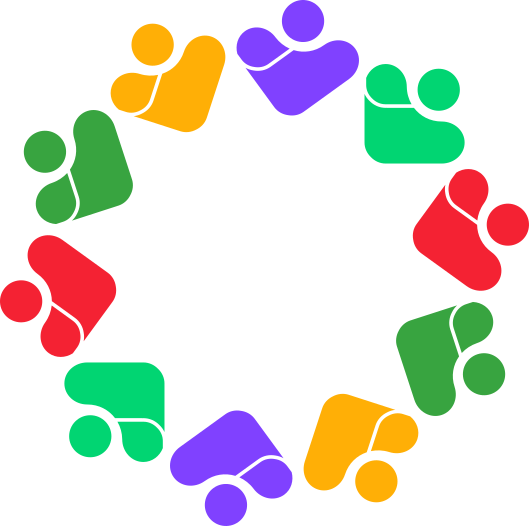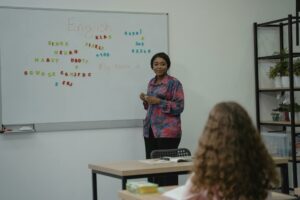The Dawn of Singapore Maths
Mathematics has always been a subject that instils a sense of awe and intimidation in many students. But what if there was an approach that could demystify this complex subject and empower learners with a deep understanding of mathematical concepts? Enter the Singapore approach to Maths, a highly acclaimed teaching methodology that has garnered attention and praise worldwide. The question that many ask is, can it revolutionize the way we learn and teach mathematics?
What is the Singapore Approach to Maths?
The Singapore approach to Maths, also known as the Singapore Math or the Singapore Math Curriculum, is an innovative teaching method that originated in the small Southeast Asian nation, you guessed it, of Singapore. Developed in the 1980s by the Ministry of Education in Singapore, this approach quickly gained popularity and has since been adopted by schools and educators around the globe.
At its core, the Singapore approach to Maths emphasizes a concrete-pictorial-abstract (CPA) progression. It is based on the idea that students should progress from handling physical objects and pictorial representations to grasping abstract mathematical concepts. By employing a step-by-step approach, students develop a strong foundation in mathematical thinking, problem-solving, and critical reasoning.
It does leave us wondering how the CPA method works. So, here follows a few examples.
- Understanding Addition: When introducing an addition to young learners, the CPA method can be used. First, students can use actual objects like counters or blocks to physically combine two groups and count the total. This concrete representation helps them understand the concept of combining quantities. Next, pictorial representations, such as drawings or bar models, can be used to represent the addition problem. Finally, students move on to the abstract stage, where they use numbers and symbols to solve addition problems without the need for physical or pictorial aids.
- Multiplication as Repeated Addition: To teach multiplication as repeated addition, students can start with a concrete experience. For instance, they can use objects like buttons or beads and group them in rows or arrays. By physically counting the groups, students see the relationship between multiplication and repeated addition. Pictorial representations, such as drawings of rows and columns, can then be introduced to reinforce the concept. Finally, students progress to the abstract stage, where they use multiplication symbols and algorithms to solve multiplication problems.
- Fractions: When introducing fractions, the CPA method can be applied to help students develop a solid understanding of this concept. Students can begin with concrete materials like fraction bars or fraction circles to physically manipulate and compare parts of a whole. This hands-on experience allows them to see and feel the relationship between the numerator and denominator. Pictorial representations, such as diagrams or shaded regions, can be used to reinforce the concept of fractions. Finally, students move on to the abstract stage, where they use numerical fractions to solve problems and perform operations.
- Geometry: The CPA method can also be effective in teaching geometry. For example, when introducing the concept of angles, students can start by using actual objects, such as straws or pipe cleaners, to form and measure angles. This concrete experience allows them to understand the concept of angle size and measurement. Pictorial representations, such as angle diagrams or protractors, can be introduced to reinforce the concept and develop visualization skills. Finally, students progress to the abstract stage, where they use angle symbols and formulas to solve geometry problems.
These examples demonstrate how the CPA method progresses from hands-on experiences to pictorial representations and, finally, to the abstract stage where students can work with mathematical symbols and algorithms.
Want to get right into the Singapore approach to maths? Here are some of our Singapore books that use it.
Why Does the Singapore Approach to Maths Work?
Focus on Conceptual Understanding: One of the key strengths of the Singapore approach to Maths is its emphasis on conceptual understanding rather than rote memorization. Students are encouraged to explore mathematical concepts in a meaningful way, enabling them to develop a deep understanding of how and why mathematical procedures work. This approach allows learners to apply their knowledge to real-life situations and tackle complex problems with confidence.
Visual and Concrete Learning: The use of visual and concrete learning tools is another hallmark of the Singapore approach to Maths. Students begin by manipulating physical objects, such as blocks or counters, to understand mathematical concepts. They then transition to pictorial representations, such as bar models, which help them visualize and solve problems. This visual approach aids in the development of mental models and facilitates the comprehension of abstract mathematical ideas.
Problem-Solving and Heuristic Strategies (a hands-on approach): Students are encouraged to think critically, analyze problems from different perspectives, and apply a variety of problem-solving techniques. By equipping students with a toolkit of problem-solving strategies, such as drawing diagrams, making educated guesses, and using trial and error, this approach empowers learners to tackle complex mathematical challenges with confidence and creativity.
A great resource to take a look at is our Critical Thinking books
Spiral Progression: The curriculum design of the Singapore approach to Maths follows a spiral progression, revisiting mathematical concepts at increasing levels of complexity. This ensures that students build upon their prior knowledge and continually reinforce their understanding of fundamental concepts. The spiral progression allows for the gradual and cumulative development of mathematical skills, preventing learning gaps and enabling students to tackle more advanced topics successfully.
Mastery-based Learning: The Singapore approach to Maths promotes mastery-based learning, where students are given ample time and support to master each mathematical concept before moving on to the next. This approach fosters a strong sense of mastery, confidence, and resilience in students, as they are not rushed through the curriculum but are allowed to develop a deep understanding of each topic.
The Impact of the Singapore Approach to Maths
The success of the Singapore approach to Maths is evident in various ways:
High International Rankings:
Singapore consistently ranks among the top performers in international assessments such as the Trends in International Mathematics and Science Study (TIMSS) and the Programme for International Student Assessment (PISA).
Critical Thinking and Problem-Solving Skills:
By prioritizing conceptual understanding and problem-solving strategies, the Singapore approach to Maths nurtures critical thinking skills and equips students with the ability to analyze, evaluate, and solve complex problems. These skills are invaluable not only in mathematics but also in other academic disciplines and real-world scenarios.
Holistic Development:
The Singapore approach to Maths focuses not only on academic excellence but also on the holistic development of students. Through collaborative learning, hands-on activities, and the use of real-life examples, this approach cultivates essential life skills such as communication, teamwork, and perseverance.
Applicability to Diverse Learners:
The Singapore approach to Maths is renowned for its ability to cater to diverse learners. The concrete-pictorial-abstract progression allows students with different learning styles and abilities to grasp mathematical concepts effectively. The focus on mastery-based learning ensures that students of varying abilities can progress at their own pace while still achieving a deep understanding of the subject matter.
It’s not all sunshine and roses
Although the Singapore Maths approach is filled with grandeur and appeal, it does lack two key aspects
- It requires training. This might not be practically feasible in some schools or for homeschooled children. Yet, when applying it well, it does wonders.
- The approach is more ideological and conceptual, rather than focusing by and large on real-life application scenarios (referred to as applied mathematics).
How greatly these cons would affect a particular learner can serve as an indication of whether or not it is the right approach to be spearheading.
So where are we heading? The TL;DR
The Singapore approach to Maths has emerged as a global exemplar in mathematics education, revolutionizing the way students learn and teachers teach mathematics. Its success lies in its focus on conceptual understanding, visual and concrete learning, problem-solving strategies, spiral progression, and mastery-based learning.
By adopting this approach, educators and learners worldwide can unlock the secrets of mathematical success, empowering students to excel in mathematics and develop essential skills for lifelong learning.
As the world continues to recognize the effectiveness of the Singapore approach to Maths, it is important to note that it is not for everyone, but it surely is great.
Take a quiz
For those of you wondering if you have some aversion to mathematics that has gone by under the radar, or looking for some validation of your lifelong suspicions, you can take a quiz to see if you do indeed have some math anxiety here.



